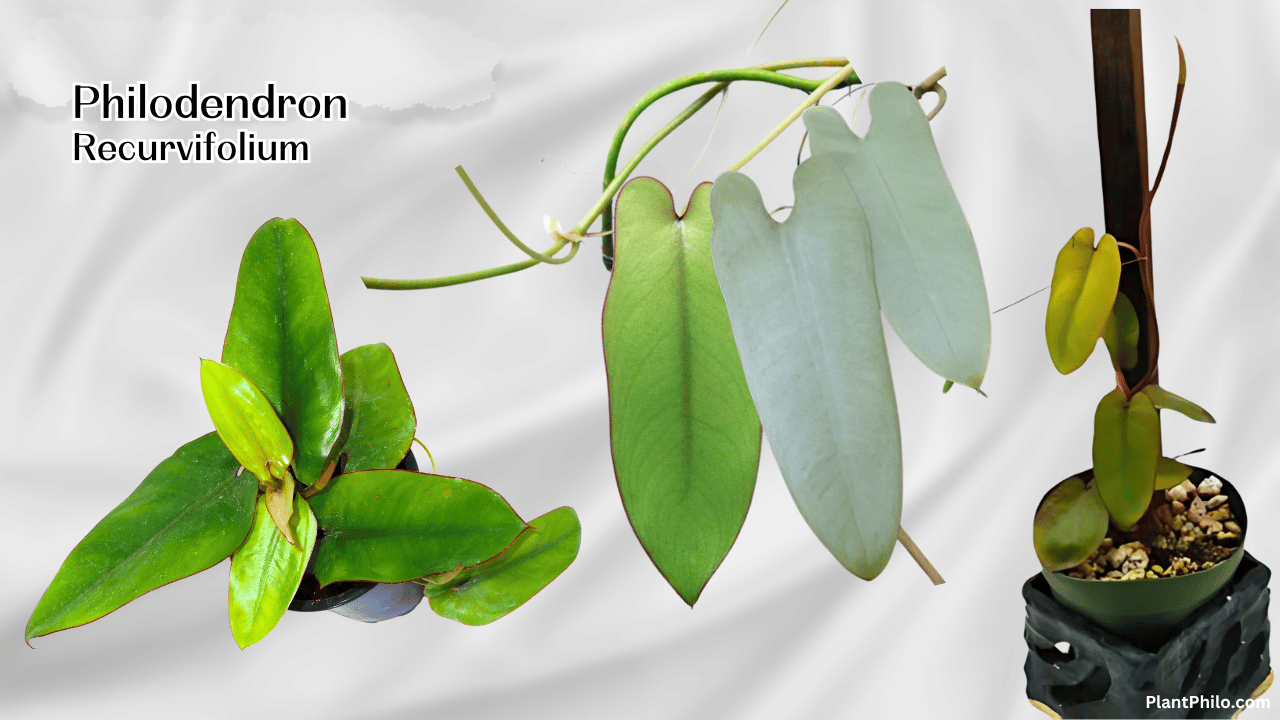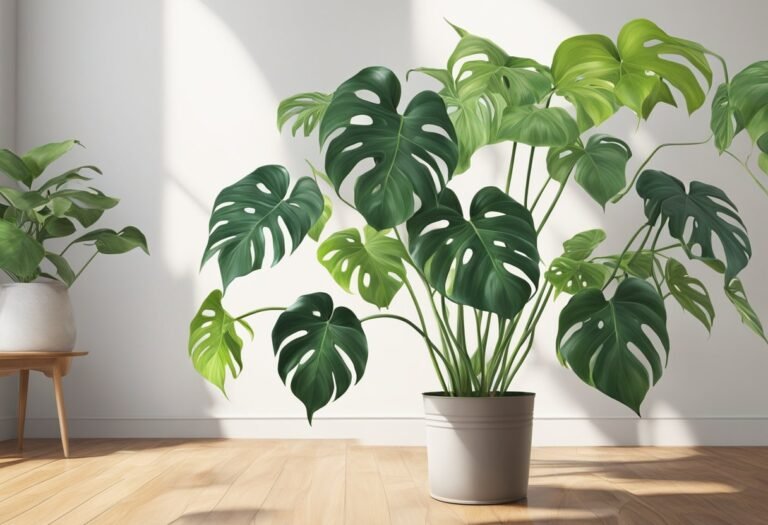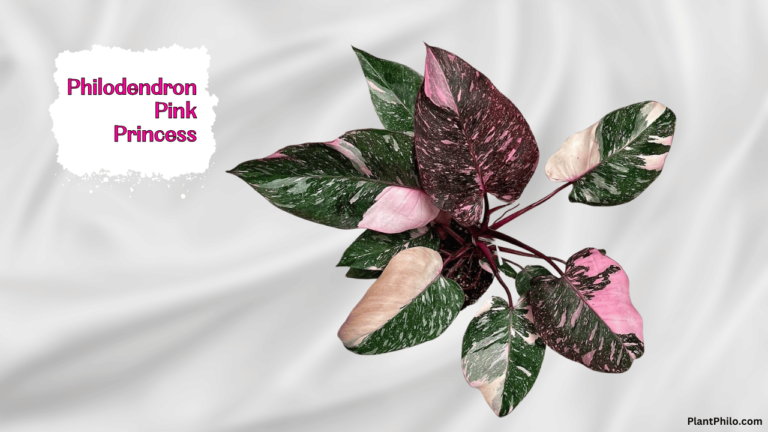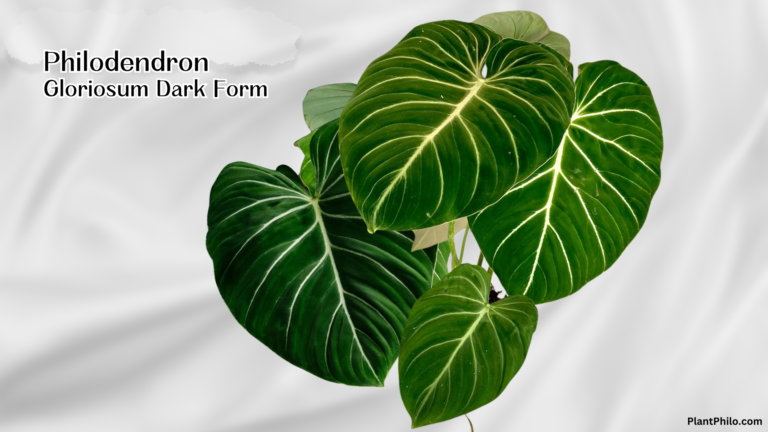Does your Philo Recurvifolium sometimes make you feel stupid? read this!
Philodendron Recurvifolium is a resilient and stunning plant, appreciated for its long, curved leaves and ease of care. For anyone who enjoys collecting plants, the Recurvifolium is a reliable choice. However, to ensure it thrives, it’s important to understand its specific needs.
This guide will break down the essential factors to keep your plant healthy and flourishing without getting bogged down in jargon or unnecessary complexity.
Philodendron Recurvifolium: At a Glance
| Feature | Details |
| Scientific Name | Philodendron recurvifolium |
| Origin | Tropical rainforests of Brazil |
| Growth Habit | Vining/Climbing |
| Leaf Shape | Elongated, lance-shaped with recurved (curled) edges |
| Leaf Color | Glossy green |
| Light Needs | Bright, indirect light |
| Water Needs | Allow soil to dry out slightly between waterings |
| Humidity | Moderate to high humidity (50-70%) |
| Soil | Well-draining, airy mix rich in organic matter |
| Fertilizer | Balanced liquid fertilizer during the growing season |
| Propagation | Stem cuttings |
| Pests & Diseases | Susceptible to common houseplant pests and root rot if overwatered |
| Toxicity | Toxic to pets and humans if ingested |
Philodendron Recurvifolium
Philodendron Recurvifolium belongs to the Araceae family, a group known for its durable and tropical foliage. Originating from Central and South America, this plant is well-known for its distinctive curved leaves, giving it the name “recurvifolium” (meaning curved leaves). It’s a vining plant that can climb or be left trailing, making it versatile for both hanging baskets and floor pots.
For beginners and experienced plant owners alike, Philodendron Recurvifolium offers a low-maintenance option that still provides aesthetic beauty.
It is both a conversation starter and a practical plant. Its leaves have a waxy finish, which helps protect it from water loss, making it quite tolerant of occasional neglect. Even if you occasionally forget to water it, this plant can bounce back with minimal fuss. Many plant collectors appreciate this quality, as not every plant is so forgiving.
Caring for your Recurvifolium: Light, Water, & Humidity
Light Requirements
Light is a critical factor in ensuring your Philodendron Recurvifolium thrives. In its natural habitat, it grows under the canopy of larger trees, receiving filtered sunlight. Mimicking this environment is crucial for its success indoors. The plant does best with bright, indirect light, though it can tolerate lower light conditions.
Placing the plant near a window that receives filtered light or in a room with plenty of natural light is ideal. Be cautious about exposing it to direct sunlight, as that can scorch its leaves. Scorched leaves appear as dry, brown patches, which can ruin the visual appeal of your plant and may take time to heal.
If your home doesn’t offer much natural light, don’t worry! Philodendron Recurvifolium adapts well to artificial light. You can place it under LED grow lights for a few hours each day to keep it healthy. Many indoor gardeners have found success growing these plants in lower light conditions, but keep in mind that reduced light will slow down their growth.
Watering Routine
Watering is where many plant owners go wrong. With Philodendron Recurvifolium, overwatering is a more common issue than underwatering. This plant prefers its soil to dry out between waterings, so a bit of caution here goes a long way. A good rule of thumb is to let the top two inches of soil dry out before adding more water.
How do you know when it’s time to water? The simplest way is to stick your finger into the soil up to the second knuckle. If the soil feels dry, it’s time to water. If it still feels damp, give it a few more days. Remember, this plant is far more likely to suffer from root rot if kept in soggy soil.
Root rot is a death sentence for many houseplants, and it’s important to avoid it. Ensure the pot you’re using has drainage holes, and empty the drainage tray regularly. Standing water can lead to fungal infections in the roots, which are harder to treat than they are to prevent.
Humidity Need
Philodendron Recurvifolium thrives in high humidity, similar to the tropical rainforests it calls home. Ideally, you should aim for humidity levels of at least 50%. If you live in a dry climate or your home is particularly dry due to air conditioning or heating, you can increase the humidity around your plant in several ways.
One method is to group plants together. Plants naturally release moisture through a process called transpiration, and clustering them helps maintain higher humidity levels. Another simple solution is to place a shallow dish of water near the plant. As the water evaporates, it will add humidity to the air.
In colder or very dry environments, you might need to use a humidifier to maintain proper levels of moisture. This is particularly important during the winter months when indoor air can become very dry due to heating systems. Philodendron Recurvifolium will tolerate average household humidity, but if you want it to truly flourish, extra humidity is ideal.
Temperature Tolerance
Temperature-wise, Philodendron Recurvifolium prefers a range of 65°F to 80°F (18°C to 27°C). It’s sensitive to cold drafts, so keep it away from doors, windows, or air conditioning units where temperature changes could occur. Consistency is key here; sudden fluctuations can stress the plant and stunt its growth.
Soil Recipe
A well-aerated, chunky soil mix is crucial for the health of your Philodendron Recurvifolium. The plant thrives in a soil blend that allows for good drainage while retaining some moisture.
A mix of peat, perlite, and orchid bark works perfectly. The peat helps retain moisture, while the perlite and orchid bark provide aeration and drainage, ensuring the roots don’t stay waterlogged.
Repot Guideline for Your Philodendron Recurvifolium
Repotting is an essential part of plant care. As Philodendron Recurvifolium grows, its roots need more room. Typically, you’ll want to repot every two to three years, depending on how fast your plant grows. Choose a pot that is one or two sizes larger than the current one. A larger pot will give the roots more space to expand without overwhelming the plant.
Repotting is also an opportunity to refresh the soil. Over time, soil can become compacted and lose nutrients, making it harder for the plant to absorb what it needs to grow.
When repotting, gently loosen the roots and replace old soil with fresh, nutrient-rich potting mix. This will provide the plant with the essential minerals it needs for sustained growth.
Fertilizing Your Recurvifolium
While Philodendron Recurvifolium doesn’t require heavy feeding, it benefits from regular fertilization during its active growing months, which are typically in the spring and summer. Using a balanced liquid fertilizer diluted to half strength works best. Feeding once a month is usually sufficient to promote healthy growth and maintain the plant’s vibrant appearance.
Too much fertilizer can lead to salt build-up in the soil, which can cause leaf burn and root damage. If you notice white crusts forming on the soil or the tips of the leaves turning brown, it’s a sign of over-fertilization. In this case, flush the soil with water to wash away the excess salts.
Propagation Method for Philo Recurvifolium
Propagation is one of the more enjoyable aspects of caring for a Philodendron Recurvifolium. Whether you’re expanding your plant collection or sharing with others, propagation is straightforward and rewarding. Additionally, Philodendron Recurvifolium roots relatively quickly, making it a beginner-friendly plant for propagation.
The Recurvifolium is typically propagated through stem cuttings. Ensure each cutting has at least one node and a few leaves. Root the cuttings in water or moist sphagnum moss. With a little patience, you’ll have new Recurvifolium plants to share or expand your collection. The most common method is stem cuttings, which can be done in just a few steps:
Step 1: Select a healthy stem
Choose a stem with at least two or three leaves and a visible node. Nodes are small, brownish bumps where roots will eventually grow.
Step 2: Cut just below the node
Using clean scissors or pruning shears, make a clean cut just below a node. The cutting should be about 4-6 inches long.
Step 3: Root in water or soil
Place the cutting in a glass of water, ensuring the node is submerged. Change the water every few days to keep it fresh. Alternatively, you can place the cutting directly in the soil, keeping the soil consistently moist.
Step 4: Wait for roots
In water, roots will begin to form after a few weeks. Once the roots are about an inch long, you can transfer the cutting to a pot with soil.
Toxicity Warning
It’s important to remember that Philodendron Recurvifolium is toxic to both pets and humans. It contains calcium oxalate crystals, which can cause irritation in the mouth and throat if ingested. Keep this plant out of reach of curious pets and children, and always wash your hands after handling it, especially if you’ve been pruning or propagating.
While the toxicity won’t usually be life-threatening, it can cause discomfort. If a child or pet has ingested part of the plant, it’s best to consult a doctor or veterinarian.
Common Problems and Solutions
While Philodendron Recurvifolium is generally a tough plant, a few issues can arise if its basic needs aren’t met.
Yellowing leaves
This is typically a sign of overwatering. Ensure the soil has time to dry out between waterings, and always check for proper drainage.
Brown leaf tips
This usually indicates low humidity or under-watering. Increase the humidity levels or water a bit more consistently.
Pests
Like most houseplants, Philodendron Recurvifolium can attract pests such as spider mites, mealybugs, scale and aphids. Regularly inspect the leaves, especially the undersides. Treat infestations promptly with insecticidal soap or neem oil.
Overwatering can also lead to root rot, so be mindful of your watering habits. Also, wipe the leaves down with a damp cloth to prevent infestations. In severe cases, an insecticidal soap can be used to treat the plant. Remember, prevention is key!
Final Thoughts
Philodendron Recurvifolium is a striking and adaptable plant that fits seamlessly into a variety of environments. Its long, curving leaves and tolerance for low light make it a popular choice for plant enthusiasts at all levels. While it’s relatively easy to care for, ensuring that its basic needs for water, light, and humidity are met will keep this plant thriving for years to come.
Whether you’re growing it for its aesthetics or simply for the joy of having a piece of tropical nature in your home, the Philodendron Recurvifolium is a wonderful addition to any collection.
Why are the leaves on my Philodendron Recurvifolium turning yellow?
Yellowing leaves can indicate overwatering, underwatering, or nutrient deficiencies. Check the soil moisture and adjust your watering accordingly. Consider fertilizing during the growing season if nutrient deficiency is suspected.
How often should I repot my Philodendron Recurvifolium?
Repot every 1-2 years or when the roots become overcrowded. Spring is the ideal time for repotting.
Can I grow my Philodendron Recurvifolium outdoors?
Yes, but only in tropical or subtropical climates with high humidity and filtered light. Protect it from direct sunlight and extreme temperatures.
How do I encourage my Philodendron Recurvifolium to climb?
Provide it with a moss pole, trellis, or other support structure to encourage its natural vining habit.
What are the signs of underwatering in a Philodendron Recurvifolium?
Wilting or drooping leaves, dry soil, and brown leaf tips can indicate underwatering. Increase the frequency of watering and ensure the soil remains slightly moist.
Can I propagate my Philodendron Recurvifolium from a leaf cutting?
No, leaf cuttings won’t produce new plants. You need a stem cutting with at least one node for successful propagation.
Why are the new leaves on my Philodendron Recurvifolium smaller than the older ones?
This could be due to insufficient light, nutrient deficiencies, or the plant adjusting to a new environment. Ensure it receives adequate light and consider fertilizing during the growing season.
Is the Philodendron Recurvifolium rare?
While not as common as some other Philodendron varieties, it’s becoming more readily available in the plant trade.
Where can I buy a Philodendron Recurvifolium?
Look for reputable plant sellers specializing in aroids. Online retailers and local nurseries might carry this species.
How fast does the Philodendron Recurvifolium grow?
With optimal care, it can exhibit moderate to fast growth, especially during the growing season. Providing a support structure for climbing can also encourage faster growth.





